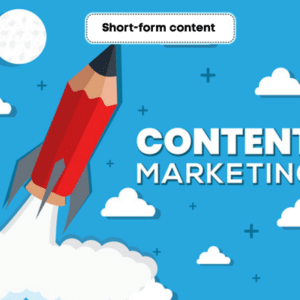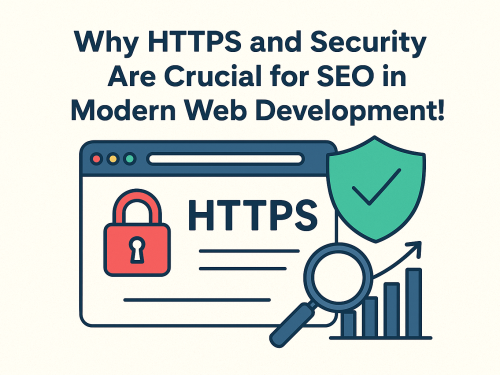With technological advancements, the internet is gaining thousands of new users every day. Not only are users increasing, but marketers are also getting tough competition in numbers. Users are getting wide options and loads of content for their searches. However, with a lot of content options, users’ attention spans are also declining. Now, internet scrollers are more informed and expect valuable content from what they consume. This makes marketers think about their content and pushes them to deliver better content.
There are two types of content that are catching the eyes of users. And these are long-form content and short-form content. In this blog, we’ll compare both content types, explore their benefits, and help you decide what works best in 2025.
What is the content dilemma in 2025? Let’s find out
The foundation of digital marketing is always content. Be it a startup, an established brand, or a solo creator, the success of your online strategy depends a lot on the type of content you produce. Here, there are two types of content that rule the internet. And the biggest question facing marketers today is: Should you focus on long-form content or stick to bite-sized short-form content? Let’s talk about the long-form content first:
The case for long-form content: depth, SEO, and authority

Long-form content usually refers to articles, blogs, or guides that go beyond 1,000 words. These writing formats talk deeply about the topics. They offer well-researched and comprehensive information. In a world where Google and AI-driven search engines are prioritizing useful content, these long-form pieces are still providing valuable content for users.
Not only that the other major benefit of long-form content that it works best in SEO terms. Longer articles tend to rank higher because they cover a topic in more detail, include natural keywords, and answer user questions more effectively. This means more organic traffic over time.
In 2025, people want answers that solve real problems. A 1,500-word blog that explains how to start a podcast will likely outperform a 300-word summary. That’s because longer content builds trust and shows expertise. It’s also more likely to earn backlinks, which further boosts search engine rankings.
Another advantage is that long-form content keeps readers on your site longer. This helps reduce bounce rate and signals to search engines that your page is valuable. If your goal is to build authority in your niche, especially in B2B, education, or tech, this type of content is a smart option to work on.
Remember: It is important to note that quality matters more than word count. A long piece filled with fluff won’t work. The key is relevance, clarity, and structure.
The power of short-form content: speed, engagement, and social reach

On the other hand, short-form content includes everything from 15-second videos and infographics to 300–800 word blog posts and social media updates. This type of content thrives in fast-paced digital spaces where attention is limited.
One of the biggest strengths of short-form content is its ability to grab attention quickly. Platforms like TikTok, Instagram Reels, and Twitter have made this format extremely popular. It’s easy to consume, share, and comment on. That means more engagement and faster reach.
In 2025, mobile-first consumption continues to grow. Most users scroll through content while commuting, waiting in line, or during breaks. They don’t always have time or patience for long reads. Short-form content works best for them. This content offers instant value, whether it’s a quick tip, a product teaser, or a visual summary.
This format is also easier and faster to produce. You can respond to trends in real time or publish updates frequently without draining resources. For startups or influencers working with limited budgets, short content allows them to stay active and visible.
Moreover, not every message needs a deep dive. A restaurant announcing a new menu item or a fitness coach sharing a workout tip can achieve more with a short Instagram reel than a 1000-word blog post.
However, the downside is that short-form content may lack depth. It often needs to be supported by longer pieces or links for users who want more detail.
What works best in 2025: context, audience, and channel
So, which one should you choose, long-form content or short-form content?
In 2025, choosing between long-form content and short-form content is no longer a black-and-white decision. This is because each format serves a purpose, and the most effective content strategies use both in a balanced way. Moreover, the answer depends on your audience, your goals, and where the content will be shared.
Long-form content
- If your goal is to educate, build thought leadership, or improve your content for SEO, then long-form content is the way to go. It works well on websites, blogs, LinkedIn, and platforms where users expect in-depth insights.
- Long-form content is perfect for in-depth storytelling, educational content, and boosting content for SEO. It helps brands build authority and maintain strong search visibility.
Short-form content
- If your goal is to entertain, increase brand awareness, or drive quick engagement, then short-form content is ideal. It shines on social platforms like Instagram, TikTok, and Facebook, where users are in “scroll mode.”
- Short-form content, on the other hand, is excellent for grabbing attention, driving engagement, and staying visible in fast-moving digital environments. It’s easy to produce and works well for mobile-first audiences.
You need to think about the buyer’s journey, like when they may want your content. You should be aware that the stage they prefer short-form content that delivers quick, digestible insights. As they move into the consideration and decision stages, users seek deeper understanding, trust, and evidence. This is where long-form content proves invaluable. So, combining both formats ensures you’re meeting your audience’s needs at every touchpoint.
Many successful brands are now using hybrid content strategies. For example:
- A short video teaser can link to a full blog post.
- A blog post can be broken into bite-sized social posts.
- An infographic can summarize a long article for email marketing.
Best practices for identifying what form of content works
Analytics tools play a key role here. So you don’t rely on assumptions. Use data to track which format delivers the best engagement, traffic, and conversion rates across platforms. Dive into metrics like bounce rate, time on page, and click-through rates to understand user behavior.
A/B testing different content lengths, headlines, and styles can reveal exactly what resonates with your target audience, helping you refine and optimize your content strategy continuously.
Also, consider the lifespan of your content. Short-form content can generate fast engagement but often fades quickly. In contrast, long-form content tends to deliver ongoing traffic and SEO value over time. Recognizing this difference allows you to balance immediate impact with long-term growth, helping you invest your content resources more wisely for sustained results.
Conclusion: Strike the Right Balance for Maximum Impact
Ultimately, your content strategy should be flexible. Understand your audience, define your goals, and select the format that best fits the context. Test, learn, and adapt as needed. In the end, it is not about long vs. short-form content. It is about being smart, strategic, and user-focused with every piece of content you create.
For valuable content creation, you can contact Geek Informatic & Technologies Pvt. Ltd. We assist all niche marketers, whether you want technical content, whitepapers, case studies, or short or long-form blogs, we do it all.









